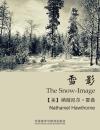《章鱼》描写西部圣华基恩河流域农场主台力克联合其他农场主要求铁路公司履行诺言,恢复原订的土地价格,反对提高粮食运价,遭到拒绝。农场主上诉法院,也未取胜。他们想在“铁路专员委员会”中塞进自己的人,即台力克的儿子,但他被铁路公司收买,计划归于失败。后铁路公司动用武装没收沿线的土地,农场主自卫还击,被打得家破人亡,佃户的下场则更为悲惨。诺里斯认为小麦代表“善”,铁路代表“恶”,而“善”必将战胜“恶”,所以小说的结局是铁路公司经理贝尔曼“淹死”在小麦堆里。
《章鱼》描写西部圣华基恩河流域农场主台力克联合其他农场主要求铁路公司履行诺言,恢复原订的土地价格,反对提高粮食运价,遭到拒绝。农场主上诉法院,也未取胜。他们想在“铁路专员委员会”中塞进自己的人,即台力克的儿子,但他被铁路公司收买,计划归于失败。后铁路公司动用武装没收沿线的土地,农场主自卫还击,被打得家破人亡,佃户的下场则更为悲惨。
The Octopus: A Story of California is a 1901 novel by Frank Norris and the first part of a planned but uncompleted trilogy, The Epic of Wheat. It describes the raising of wheat in California, and conflicts between the wheat growers and a railway company. Norris was inspired by the role of theSouthern Pacific Railroad in events surrounding the Mussel Slough Tragedy. It depicts the tension between the corrupt railroad and the ranchers and the ranchers' League. The book emphasized the control of "forces" such as wheat and railroads over individuals. Some editions of the work give the subtitle as alternately, A California Story.
- Book I
- Book II
- 书评 写书评
- 笔记
-
书评加载中...























 京公网安备 11010802032529号
京公网安备 11010802032529号
笔记加载中...